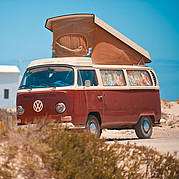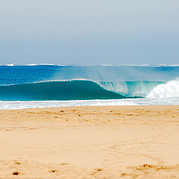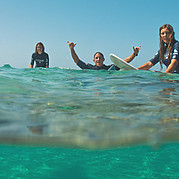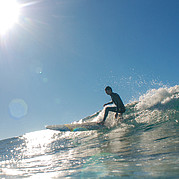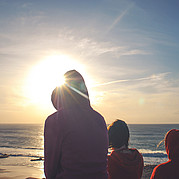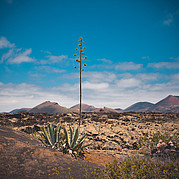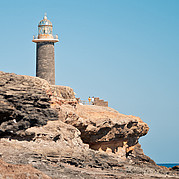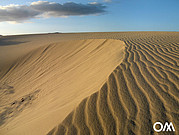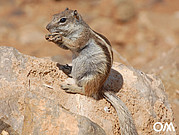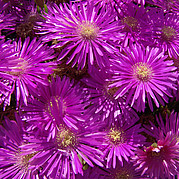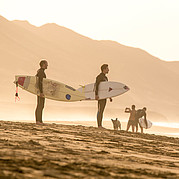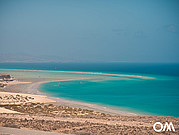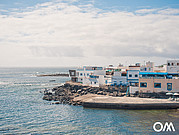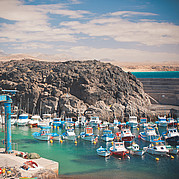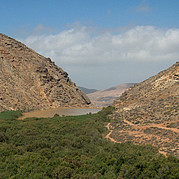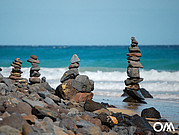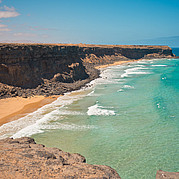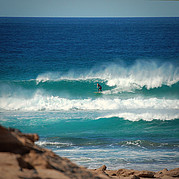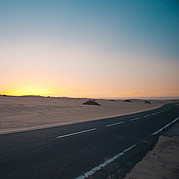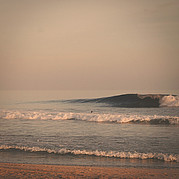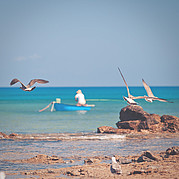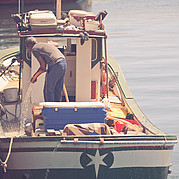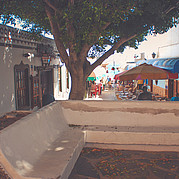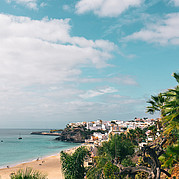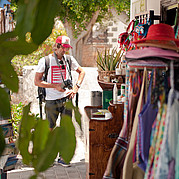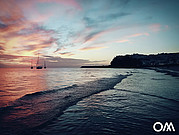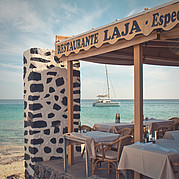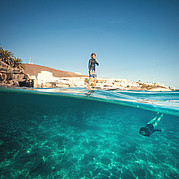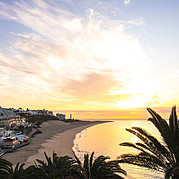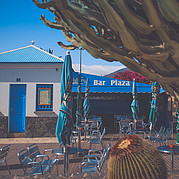Our favorite island fuerteventura
The Canary Islands are known as the European Hawaii.
A name the islands truly deserve, because during the European autumn and winter seasons the beaches and reefs on Fuerteventura and Lanzarote provide excellent surfing conditions for every type of surfer from beginner to advanced.
Spring and summer seasons on the islands offer optimal surfing conditions for beginners and intermediates.
Moderate wave heights, 100 percent sun guarantee, tourists from all over the world and romantic sunsets, make Fuerteventura and Lanzarote the ideal place to learn surfing and improve your surfing.
The Canary archipelago and with it Fuerteventura originated about 20.6 million years ago. Fuerteventura is about 130 kilometers long, the widest point about 35 kilometers wide and at the narrowest point not even 5 kilometers wide. It is believed that Fuerteventura originally consisted of two separate islands. There are many different notes, that the northern part of Fuerteventura's "Maxorata" and the southern part of Fuerteventuras "Jandia" were originally two separate islands.
The Canary Islands
The Canary Islands were discovered by Phoenician sailors some 1000 years before Christ. Already there lived people in the Canaries. The local inhabitants called themselves Guanchen and probably descended from Berber tribes from North Africa. Around 1400 the Norman Jean de Béthencourt undertook his first discovery journey from Lanzarote to Fuerteventura. It took him 3 years until he succeeded in subduing the island and swear his feud in front of the Spanish king.
In the 17th and 18th century, there were many attacks on Fuerteventura by privateers. Legendary is the battle for Tuineje, where the inhabitants managed to strike the attacking English corsairs with some rifles and dromedaries. This day is celebrated until today at the end of each summer in Tuineje with a folk festival.
In 1852, the Canary Islands were declared a free trade zone. In 1927 Lanzarote, Fuerteventura and Gran Canaria were merged into the autonomous province of Las Palmas.
The climate of the Canaries and Fuerteventura is warm and mild throughout the year, which is why the Canary Islands are called the islands of eternal spring. The sea balances the temperature and the trade winds block the hot desert air from the Sahara. Although there is more precipitation in the Canarian winter than in the summer, it does not rain at all for weeks and the few rainfall in Fuerteventura's winter are often enough to cover the island from February to April with a light green veil.
The water is warm at 20 to 24 degrees and never gets colder than 18 degrees even in winter. So you can go on a beach holiday in Fuerteventura 365 days a year.
Our neighboring island Lanzarote
Black sand, green cactus fields and cesar manrique…
Lanzarote have the islands with the youngest volcanoes of the Canaries and provides beautiful little fishing villages, heaps of spots with culture and art, a few of the best surf spots in Europe and some real secret surf spots, pssst…!
Day trips from Fuerteventura to Lanzarote are easy to organize. Ferries from the north of Fuerteventura to Playa Blanca on Lanzarote go every hour, the journey takes about 30 minutes.
Fuerteventura
Deserted beaches, never ending off road pistes, 365 days sunshine a year- welcome to Fuerteventura!
Fuerteventura, nearly as big as Tenerife, is sparsely populated. A place of opposites - crystal clear blue water, white sand, tourist hype and the end of the world adjoin close. A rough beauty where you will have a little taste of adventure every day.
Fuerteventura - The Canary Island with the endless beaches. Fuerteventura is often compared to Hawaii, which is surely due to the fact that Fuerteventura offers excellent conditions for surfing. There are a few more parallels, but actually the comparison only tries to flatter the island, because Fuerteventura basically has its own distinctive charm.
Fuerteventura is the oldest of the Canary Islands and the flattest. The highest mountain of Fuerteventura, the "Pico de Jandia" measures just 800 meters. Erosion and plate tectonics have shaped the unique appearance of the landscape, which is especially evident when comparing Fuerteventura with other, younger Canary Islands, such as Lanzarote. The beige to red earth of Fuerteventura is in stark contrast to the black lava fields of Lanzarote.
Because of its low mountains, Fuerteventura is drier than other Canary Islands. Clouds pull, driven by the strong trade winds over Fuerteventura flow away without de-energizing.
The original vegetation was cut down by the first colonialists of Fuerteventura and used as a building material or eaten by the many free-roaming goats of Fuerteventura. This led to a strong erosion of the soil, which is why Fuerteventura is often a desert. Fuerteventura is therefore the most ardent of all the Canary Islands.
Nevertheless, what is for the one desolate tristess. is pure nature for the other, because the landscape, formed by the sea, the sun and the wind, radiates an originality that can still create real adventure feelings. Fuerteventura always offers a surprise. An unspoiled beach, a wide panorama, a few hidden fishermen's huts, green cacti fields and the ever-blue waters are just a few reasons why Fuerteventura is still a popular holiday destination.
Anyone looking for Fuerteventura antique architecture or a lively cultural scene will surely be disappointed. The real attractions in Fuerteventura are the kilometer long, lonely and white beaches, which not have merged through strong sandstorms originated from the nearby Sahara, but by limestone of marine animals such as shells and crabs.
In the interior of the country, especially in the mountains around Betancuria and Pajara, there are some villages that show how life has taken place 100 years ago on the island. The green slopes of the Vega de Rio Palma invite you to go hiking as well as the picturesque canyon of the Buen Paso. Betancuria, the first island capital, attracts with arts and crafts and Canarian restaurants, such as Ajuy with the wild cliff and cave landscape.
A special trip is a trip to the southern end of Fuerteventura, to the longest beach of the island called Cofete with the abandoned and legendary Villa Winter.
Fuerteventura has about 100000 inhabitants, is the second largest of the Canary Islands and with 23 inhabitants per square kilometer also the least densely populated. In former times, the insects lived from agriculture, cattle breeding and fishing, today tourism is the main economic activity of Fuerteventura. Tourism began in the 1960s, but the great tourist throng began in Fuerteventura at the end of the 80's and early 90's.
Fortunately, the tourism has not changed the image of the island as much as in other Canary Islands. The Playa de Ingles on Gran Canaria is more like the nightmare of a concrete desert than a tranquil resort. Even the places on Fuerteventura, known as tourist centers, remain manageable large and lie directly on the endless sandy beaches of the island. The largest tourist resorts in Fuerteventura are Corralejo and Jandia.
Jandia is actually named after the endless sandy beaches the - Playas de Jandia - the southern peninsula of Fuerteventura.
The Playas de Jandia begin in Costa Calma with the large salt water lagoon of Playa de Sotavento and, interrupted by small cliffs, extend to the long salt meadows of Jandia in the south of the island. At the end of these endless and kilometer-long beaches lies Morro Jable, the neighboring village of Jandia.
Morro Jable has preserved much of the charm of the Spanish fishing villages. In the numerous tapas and fish restaurants, canarian specialties are offered and on the several Spanish holidays there are colorfully decorated parades and concerts of Spanish Volkloregruppen and Rockbands.
Local products from Fuerteventura are the goat cheese, honey, gofio (a kind of cornmeal), sea salt and the canary shrimp potatoes with salt crust, which are served with garlic and coriander sauce.
Recently, the medicinal and cultivated plant Aloe Vera has been cultivated and distributed on Fuerteventura.
